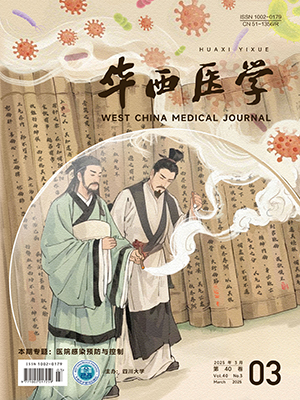| 1. |
Ma XY, Yin QS, Wu ZH, et al. C1 pedicle screws versus C1 lateral mass screws: comparisons of pullout strengths and biomechanical stabilities. Spine (Phila Pa 1976), 2009, 34(4): 371-377.
|
| 2. |
Abumi K, Ito M, Sudo H. Reconstruction of the subaxial cervical spine using pedicle screw instrumentation. Spine (Phila Pa 1976), 2012, 37(5): E349-E356.
|
| 3. |
Chin KR, Mills MV, Seale J, et al. Ideal starting point and trajectory for C2 pedicle screw placement: a 3D computed tomography analysis using perioperative measurements. Spine J, 2014, 14(4): 615-618.
|
| 4. |
El Hawary MA. Determining optimal C2 pedicle screw placement and length in patients with axis traumatic spondylolisthesis: a case series. Global Spine J, 2013, 3(2): 63-68.
|
| 5. |
Patkar SV. New entry point for C2 screw, in posterior C1-C2 fixation (Goel-Harm’s technique) significantly reducing the possibility of vertebral artery injury. Neurol Res, 2016, 38(2): 93-97.
|
| 6. |
Kosmopoulos V, Schizas C. Pedicle screw placement accuracy: a meta-analysis. Spine (Phila Pa 1976), 2007, 32(3): E111-E120.
|
| 7. |
Sugawara T, Higashiyama N, Kaneyama S, et al. Accurate and simple screw insertion procedure with patient-specific screw guide templates for posterior C1-C2 fixation. Spine (Phila Pa 1976), 2017, 42(6): E340-E346.
|
| 8. |
吴超, 邓佳燕, 罗敏, 等. 3D打印逐级导板辅助椎弓根钉固定下颈椎骨折脱位. 中国矫形外科杂志, 2019, 470(12): 1132-1136.
|
| 9. |
邓佳燕, 吴超, 林旭, 等. 3D导航模板在治疗寰枢椎骨折辅助置钉中的应用. 实用骨科杂志, 2018, 24(4): 350-353.
|
| 10. |
Yu Z, Zhang G, Chen X, et al. Application of a novel 3D drill template for cervical pedicle screw tunnel design: a cadaveric study. Eur Spine J, 2017, 26(9): 2348-2356.
|
| 11. |
Roberts TT, Leonard GR, Cepela DJ. Classifications in brief: American Spinal Injury Association (ASIA) Impairment Scale. Clin Orthop Relat Res, 2017, 475(5): 1499-1504.
|
| 12. |
Gertzbein SD, Robbins SE. Accuracy of pedicular screw placement in vivo. Spine (Phila Pa 1976), 1990, 15(1): 11-14.
|
| 13. |
Guo F, Dai J, Zhang J, et al. Individualized 3D printing navigation template for pedicle screw fixation in upper cervical spine. PLoS One, 2017, 12(2): e0171509.
|
| 14. |
Deng T, Jiang M, Lei Q, et al. The accuracy and the safety of individualized 3D printing screws insertion templates for cervical screw insertion. Comput Assist Surg (Abingdon), 2016, 21(1): 143-149.
|
| 15. |
吴超, 邓佳燕, 谭伦, 等. 逐级扩大型 3D 打印导板系统辅助寰枢椎椎弓根植钉准确性分析及临床应用. 中国修复重建外科杂志, 2019, 33(2): 212-218.
|
| 16. |
Abul-Kasim K, Strömbeck A, Ohlin A, et al. Reliability of low-radiation dose CT in the assessment of screw placement after posterior scoliosis surgery, evaluated with a new grading system. Spine (Phila Pa 1976), 2009, 34(9): 941-948.
|
| 17. |
Hu Y, Dong WX, Spiker WR, et al. An anatomic study to determine the optimal entry point, medial angles, and effective length for safe fixation using posterior C1 lateral mass screws. Spine (Phila Pa 1976), 2015, 40(4): E191-E198.
|
| 18. |
Oh SH, Min WK. Analysis of cervical pedicle with reconstructed computed tomography imaging in Korean population: feasibility and surgical anatomy. J Spinal Disord Tech, 2014, 27(3): E99-E103.
|
| 19. |
Liu J, Napolitano JT, Ebraheim NA. Systematic review of cervical pedicle dimensions and projections. Spine (Phila Pa 1976), 2010, 35(24): E1373-E1380.
|
| 20. |
Farooque K, Yadav R, Chowdhury B, et al. Computerized tomography-based morphometric analysis of subaxial cervical spine pedicle in asymptomatic Indian population. Int J Spine Surg, 2018, 12(2): 112-120.
|
| 21. |
Tan M, Wang H, Wang Y, et al. Morphometric evaluation of screw fixation in Atlas via posterior arch and lateral mass. Spine (Phila Pa 1976), 2003, 28(9): 888-895.
|
| 22. |
Wu C, Deng J, Wang Q, et al. Feasibility of Atlas pedicle screw fixation perpendicular to the coronal plane: a 3D anatomic analysis. Global Spine J, 2021: 2192568220980715.
|
| 23. |
Wu C, Deng J, Zeng B, et al. Three-dimensional anatomic analysis and navigation templates for C1 pedicle screw placement perpendicular to the coronal plane: a retrospective study. Neurol Res, 2021: 1-9.
|




